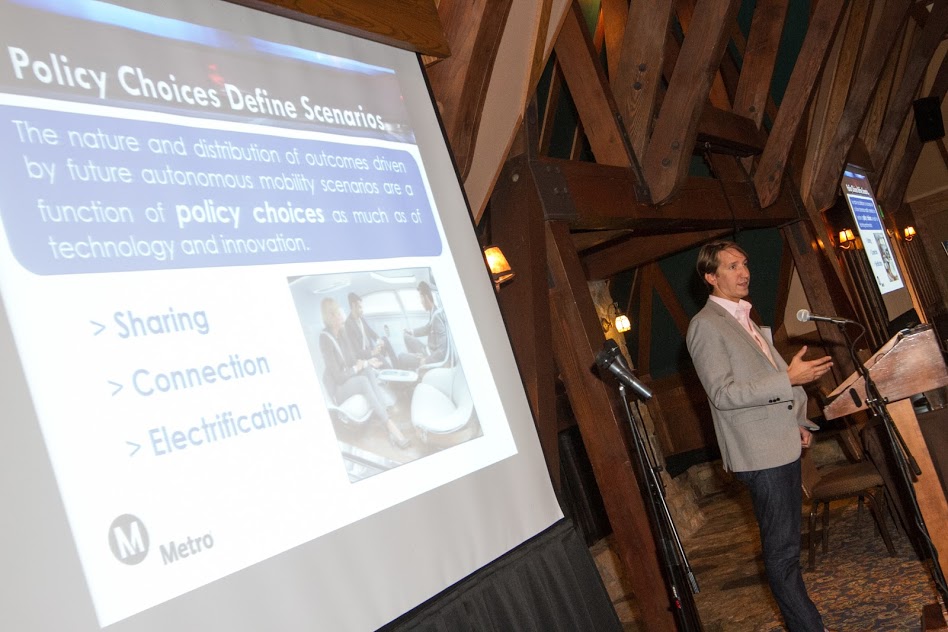Autonomous vehicles (AV) are coming, and they are coming faster than we imagined (possibly within the next 5-10 years), but are we ready? AVs have the potential to transform the way people travel, but their impacts on congestion, greenhouse-gas emissions, and travel patterns will largely depend on planning and policy choices. A reoccurring question of concern in this Monday afternoon session was whether a world of driverless cars would be considered heaven or hell in the realm of transportation.
Randy Iwasaki, Executive Director of Contra Costa County Transportation Authority (CCTA), showcased the progress CCTA has made with AVs. Under his leadership, CCTA has founded a large connected vehicle (CV) and AV test facility located in Concord, CA (GoMentum Station Program). Among other things, CCTA is exploring how shared AVs like autonomous 12-passenger vans that serve as shuttles to BART and other destinations could complement mass transit to overcome first mile-last mile challenges.
Following Iwasaki’s presentation, Prof. Joan Walker, co-director of the Center for Global Metropolitan Studies at UC Berkeley, discussed the implications of AVs on trip-making. She presented three “visions of the future.” Vision 1 included AVs improving efficiency and safety, but increasing congestion and vehicle miles traveled (VMT) per capita, with increased population and urbanization as more people own and operate personal AVs for single-occupancy trips. On the other hand, Vision 3 (the future we should aim for) is a clean, connected, and equitable future where the majority of AV trips are shared rides made in shared vehicles. Shared AV rides could lead to fewer cars on the roads, reduced congestion and VMT, and therefore fewer GHG emissions. Walker asked the group to participate in an exercise. She asked the audience to imagine themselves in an AV making a trip somewhere. She then asked the audience to raise their hands if they imagined themselves alone or with other people in the AV. Surprisingly, very few people imagined themselves in a shared trip, thus underscoring the need for policy changes that influence and change travel behaviors to reduce single-occupancy trips.
Colin Peppard (Office of Extraordinary Innovation, LA Metro) echoed Walker in calling for policy changes now to accommodate and influence the distribution of social and economic impacts and benefits of AVs in the future. He presented a spectrum of future AV mobility scenarios. On one end, there is a new mobility utopia where 100% of AVs are shared, connected, and electrified, thus reducing congestion and VMT. On the opposite end, there is a new mobility nightmare with 0% of AVs being shared, connected, or electrified, resulting in more congestion and VMT.
While a future with AVs is foreseeable, it remains unclear whether this future will present additional challenges to the compounding effects of increased congestion and VMT that stem from increased automobile use and single-occupancy trips. As Peppard said, “the future can’t run on autopilot.” We need to act now to put in place policies that influence travel behaviors, working toward a future with AV trips that are shared rides in shared vehicles. This will take additional education and outreach, collaboration, and engagement with federal, state, and local planning processes.
